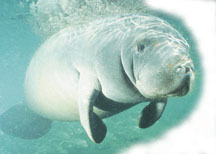| Seacoasts and estuaries
around the country need immediate protection from nitrogen and phosphorus
pollution, the National Research Council of the National Academies reported
April 4. Use of synthetic fertilizers is contributing to more than half
of the increase in nitrogen pollution damage since the 1960s. Nitrogen
and phosphorous act as limiting nutrients for plant life in marine ecosystems.
An abundance of the nutrients can result in an explosion of phytoplankton
and other organisms that sop up oxygen from the water. The report found
environmental damage along almost all of the nation’s estuaries and found
severe problems in Washington, California, Louisiana, Texas, Florida, North
Carolina, Maryland, New York and Massachusetts.
The committee suggests implementing a national
strategy to ensure the safety of today’s healthy coastlines and reduce
the number of severely damaged areas by at least 25 percent before 2020.
More information on the report, “Clean Coastal Waters: Understanding and
Reducing the Effects of Nutrient Pollution,” is available at www.nationalacademies.org.
Christina
Reed |

Manatees in Florida
are at high
risk from red tides
caused by
excess nutrients,
as are some
fisheries, coral
reefs and other
marine habitats.
Patrick
Rose, Save the Manatee Club |

